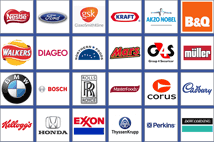Using TV systems for digital advertising has become an incredibly popular method of advertising and marketing with digital signs being erected up and down the high street.
However, digital signage is not without its pitfalls and getting a return on any initial investment on a digital advertising campaign can be a challenge, especially if this is your first flurry into digital signage.
Here are some key facts that should help you get started and get some return on your initial digital signage investment.
Location.
With any signage, digital or otherwise, location is perhaps the most important. The more people see your digital sign, the more likely it is for you to see a return on your initial investment
Location is therefore key and not only should the digital signage be placed in the area that receives the most footfalls. Outside areas will always get a larger passing audience than an indoor sign so give some thought to outdoor digital signage but wherever the sign is placed make sure it’s clearly visible and cited at eye level and not too high or low.
Size
One clear way of ensuring you maximise the visibility of your digital signage campaign is to get the largest screen size possible. A large screen can really make a difference and with both commercial LCD and plasmas TVs being built well over 70” and at reasonable cost a large sized screen is not too cost prohibitive.
Hardware
The type of screen, media player and digital signage display/enclosure required will depend on a number of things. If the signage is networked in which case content can be delivered through Ethernet otherwise it can be delivered via a small PC or even USB flash drive.
Protection
The type of display enclosure will depend on aesthetics and the purpose of the digital signage but also location can play a part. Obviously outdoor digital signage will need a waterproof enclosure to protect the TV and electronics from the weather.
Content
As with any type of signage, it can only ne as good as the messages displayed. The key woth digital signage content is to remember the media you are using. Moving images, bright colours and even sound should be used to create dynamic content rather than just a series of stills.







